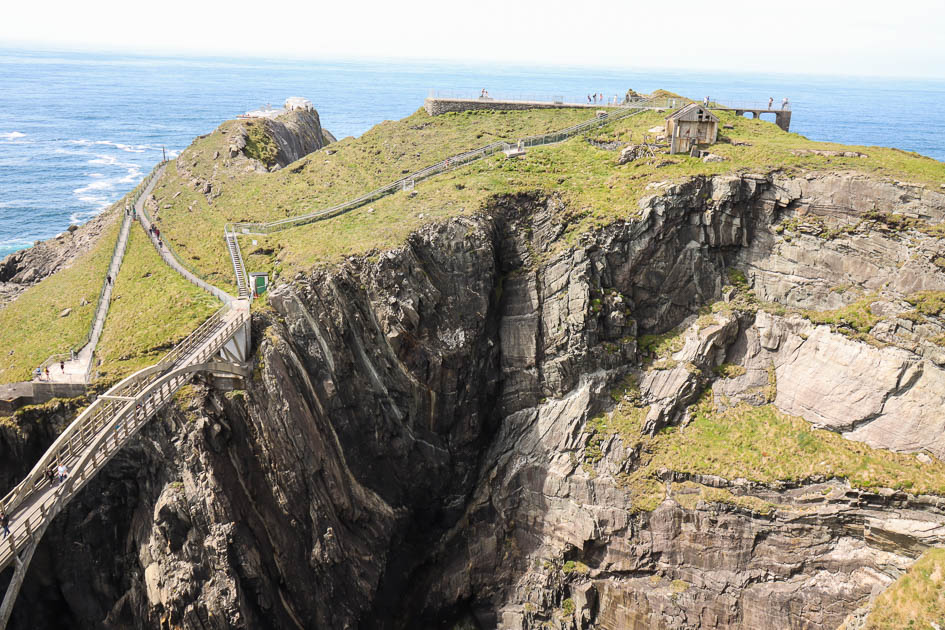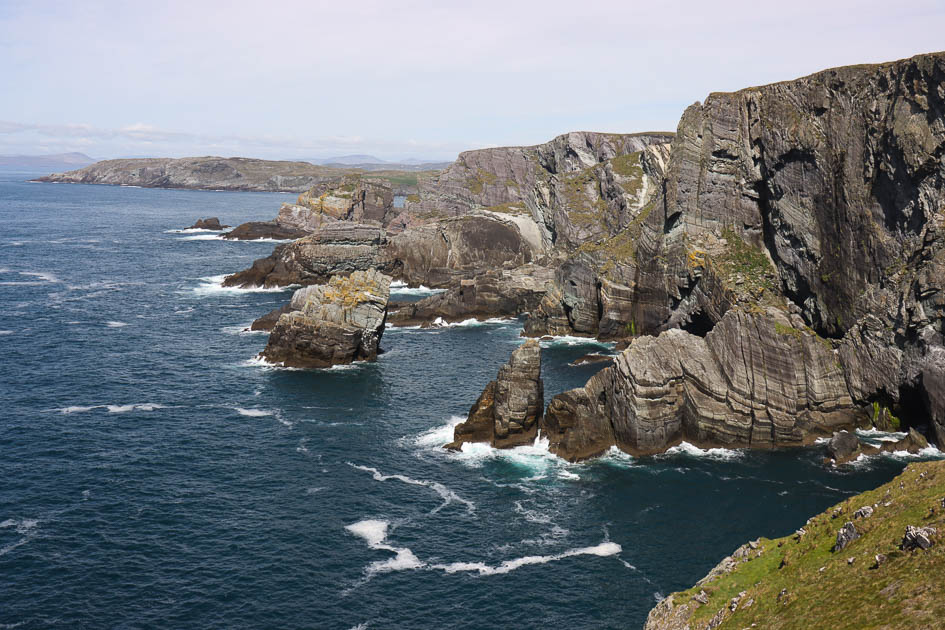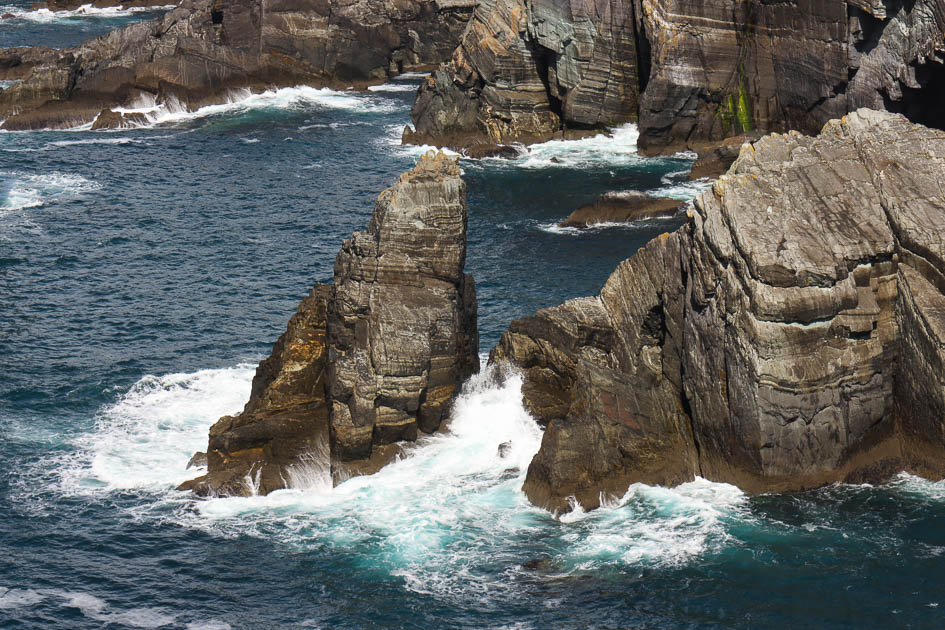Mizen Head-Finding Ireland’s Southernmost Point
With so many things to see and do in West Cork, it might be hard to decide. But you won’t go wrong if you choose to make the trek out the Mizen Head Peninsula to Mizen Head, the most southwesterly point in Ireland.

Traditionally Mizen Head was the last point of land visible to ocean-going fishermen and vessels traversing the Atlantic Ocean to North America. It’s wild and fierce and a wonderful place to contemplate the power of the mighty Atlantic as it pounds and splashes against the jagged coastline.
How to Get There
The village of Ballydehop in West Cork is the gateway to the Mizen Peninsula. Mizen is clearly signposted and as you make your way out the peninsula, you’ll pass through the scenic West Cork villages of Schull, Ballytissel, Crookhaven, and Goleen. The road becomes extremely narrow, especially as you near the tip of the peninsula. You’ll often have to pull into a lay-by to allow on-coming traffic to pass.
Ample Parking
Once you arrive at Mizen Head, there is ample parking – even on a busy day. It’s free to enter the gift shop and the café. But if you wish to continue out to the (really worthwhile) museum, the bridge, and the lighthouse, you must purchase a ticket. They are available in the gift shop.
The gift shop contains a wide variety of items. There is everything from trinkets and jewelry to cards and hats. I’m sure the hats come in handy in case you haven’t dressed properly for the weather. It is a good gift shop with a nice selection. I especially liked the unique and unusual puzzles.
The café is small and has limited seating. This is especially important to know if the weather turns bad and everyone tries to get indoors. Fortunately, I was there on a gorgeous day. I had packed a lunch which I enjoyed overlooking the cliffs and sea.

Lots of Steps
Once you head out toward the lighthouse, there is one viewing platform that has a level pathway with no steps. From there, you have fabulous views of the bridge, lighthouse, and cliffs. On a clear day, you can even see Fastnet Rock/Lighthouse which is 9 miles in the distance.
All the other paths, however, have fairly steep inclines or steps. Much, but not all, of the site is accessible to a buggy or wheelchair.
The steps are divided into 25-30 step increments. There is a small viewing platform at each interval, so you can enjoy the views as you climb (or catch your breath!) It is all quite accessible with a reasonable level of fitness.

Mesmerizing Views
I spent 3 hours at Mizen Head, just taking in the views. The day was sunny and calm, with only a light breeze. It was easy to enjoy the sounds of the seabirds and the waves as they gently crashed into the cliffs rising spectacularly out of the sea. On the distant horizon, one could make out the silhouettes of ships passing by the coast of Ireland. A bit nearer, there were a few specks on the ocean; fishing vessels from the nearby villages, checking their catches.
Apparently, it is a wonderful place to spot dolphins and whales, although the only wildlife I saw was a young harbour seal who was cavorting in the shallow, and brilliantly blue, cove below the bridge. He was clearly just as interested in the people standing on the bridge looking at him as they were in him.

Shipwrecks & Signal Lights
There have been numerous shipwrecks off the southern coast of Ireland due to the treacherous seas. However, it wasn’t until 1847, when the American liner SS Stephen Whitney sank in a storm with the loss of 92 souls, that the Irish Light Board decided that it was time to build a lighthouse.

That first light, built on Fastnet Rock, has been functional since 1854.
In 1959, a light was also placed at Mizen Head. It was replaced in 1968 with a more powerful light that can be seen for 16 nautical miles. In 1993, the light became fully automated, ending the need for lightkeepers to reside at Mizen Head.

The signal lights are unusual because they are not a typical tall lighthouse, but rather just lights outside the building. Fortunately, they didn’t demolish the lightkeeper’s house. Today it is a museum that contains videos and exhibitions that tell the story of the lighthouses in the area.

Bridging the Chasm
A deep chasm separates Cloghane Island, the actual site of the lighthouse, from the mainland cliffs at Mizen Head. They held a competition to select the design for the original footbridge. It was constructed of reinforced concrete which was deemed better able to withstand the ubiquitous seaspray and salty fog. Completed in 1910, it lasted nearly 100 years until an engineering survey in 2005 discovered that the structure was highly unstable and it was closed – literally overnight.
A temporary scaffold was built and fundraising began for a new bridge. The new bridge cost over €2 million and opened in 2010. Although the bridge and signal house were closed for 18 months, the Visitor Center and Museum remained open during construction. Mizen Head was, and continues to be one of the principal tourist attractions in West Cork.

The bridge spans the chasm at a height of 150’ above the sea below and offers stunning views of the rocky outcroppings along the coastline.

Visiting Mizen Head
Mizen Head Visitor Center is open year-round – daily through the summer but only on weekends from November to March. For full information, visit https://mizenhead.ie/.
It’s a great day out at a beautiful and unique site.


 Call us using WhatsApp
Call us using WhatsApp